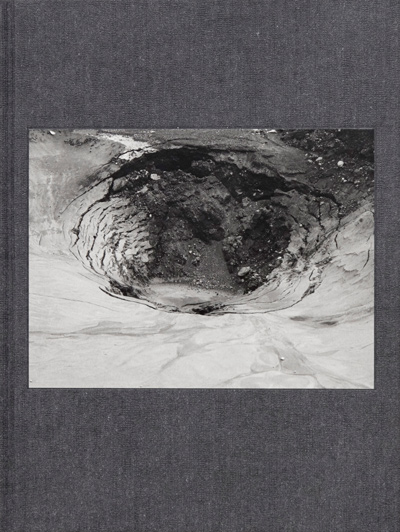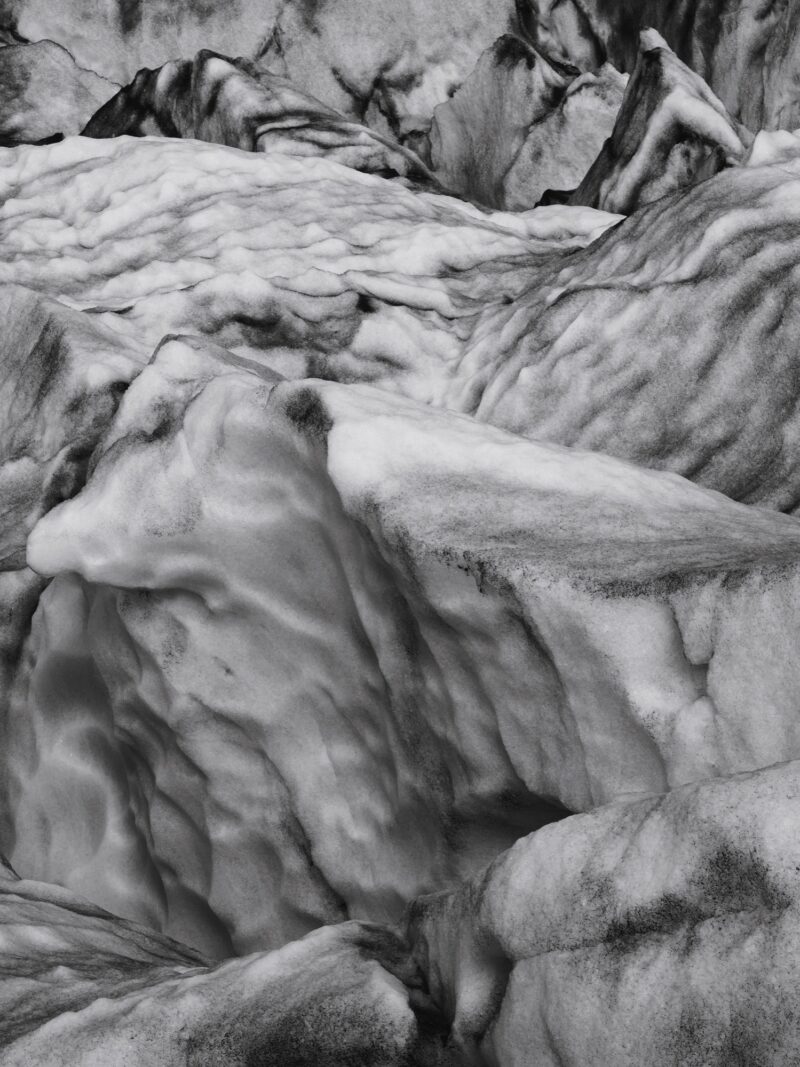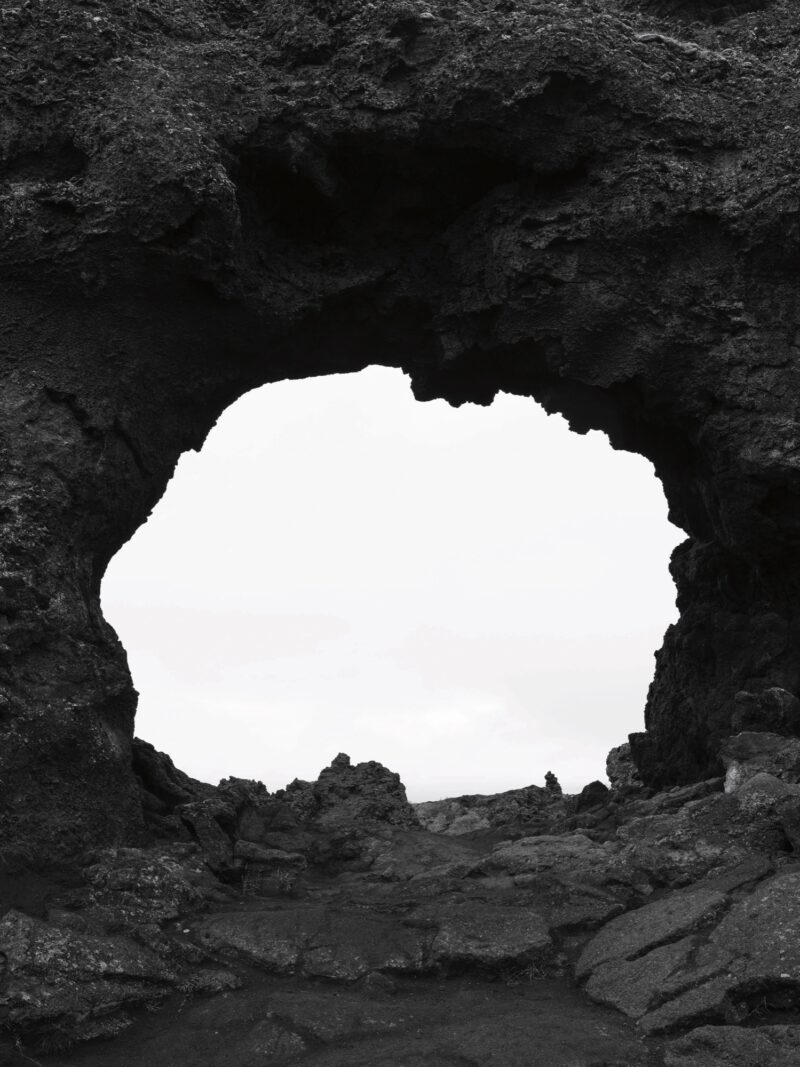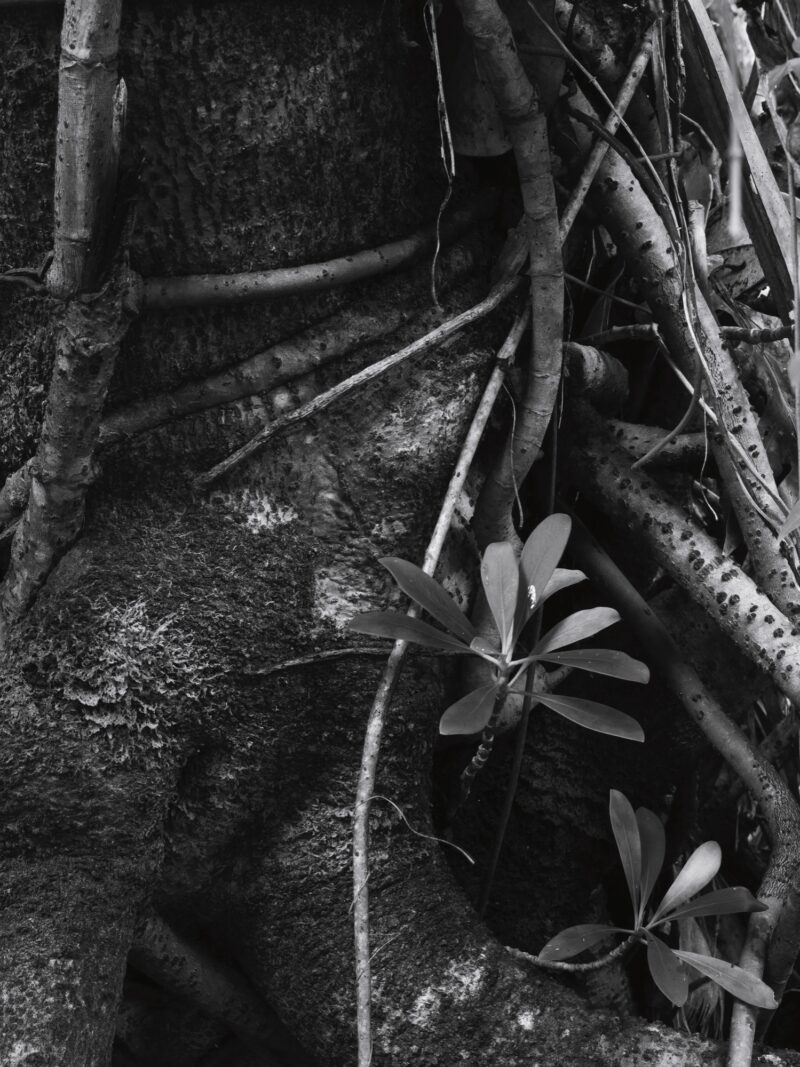[Summer 2021]
Ron Jude, 12 Hz
By Louis Perreault
Londres, Mack Books, 2020, 128 p.
Even before we open its cover, 12 Hz seems to vibrate on the table. As we plunge into the ice, rock, and powerful sea currents that mark out the pages of this book by American photographer Ron Jude, we are invited to a sensory experience that overflows the edges of the photographs.
Jude had previously concentrated on works in which the sequencing of the images is fundamental to the creation of their meaning. In his past books, he exploited the narrativity of photography as a medium and turned that narrativity upon itself, set alight by the ambiguity of significations and underlain by sudden shifts in meaning, as a single image sometimes dramatically changed the interpretation. He has stood out as an extraordinary creator of photobooks, constantly finding new ways to complexify the medium.
12 Hz, however, marks a new direction in his practice. Landscape, which in the past acted as the setting against which his ideas were deployed, has become the main subject. Moreover, it is not the narrative line of the photographs that imparts value to the book. Another phenomenon is at work: a strategy that functions by accumulation rather than juxtaposition. One can imagine the conception of 12 Hz as a musical composition, each image acting as a track added to the others, each vibrating at a different frequency. Like a composer at the mixing console, Jude adjusts the levels of each track, measuring out the abstraction, the textures, the reproduction of space and place. In a medium that tends to foster relations of meaning based on sequences, he turns to constructing strata in which readers feel, as they turn the pages, the crescendo of vibrations as if the volume were being turned up on a piece of music.
Reference to the world of sound is found also in the title of the book: 12 hertz (Hz) is the lowest frequency that can be heard by the human ear. Here, Jude is exploring the limits of the perceptible and what it is possible to understand through the senses. This is what occurs when sound waves become forces that shape landscapes: they are manifested underground, modulated by phenomena that are largely beyond the realm of human history. Jude explores these movements, which are imperceptible and impossible to photograph directly, through their impacts on nature: from lava fields to glaciers, from waves slapping against shorelines and cliffs to smoking volcanic chimneys, limestone caves, and grottoes sculpted by stalactites. Paradoxically, we grasp a force in motion in the immobility of the rock that composes many of the photographs.
The moment we open the book, we are engulfed in the deeply dark tonalities upon which much of the work is based. The high-quality printing is able to convey a surprising range of values situated at the impenetrable extremes of the histogram. The simple design of the book is given over entirely to the photographs except for a short poetic text by author Paul Kingsnorth. In 2009, Kingsnorth created the Dark Mountain Project, a movement highlighting the
role of creation in the renewal of environmental discourse. Uncivilisation, the group’s manifesto, called, among other things, for “uncivilized” writing with “a perspective which sees us as one strand of a web rather than as the first palanquin in a glorious procession.”1 Jude’s photographic writing responds to this
appeal by highlighting the forces among which we find ourselves and offering a work that reconnects them to our experience rather than presenting them as separable and independent objects of study.
At the end of the book, the sequence of pages arrives at an ultimate movement, as Kingsnorth’s text is followed by a beige sheet that is attached to the endpaper bound to the cover. Under this coloured page is a sequence of images printed on much finer paper. Suddenly, we find ourselves in the midst of dense foliage, roots, branches, and trunks – in short, at the heart of organic life that brings our experience to a recognizable temporal scale. Through the material construction of the book, this last booklet launches us, at the end of the journey, into a new cycle of life. The nature presented in it is completely different from what we have seen before, and yet it responds to the echo of the vibrations that we have felt with a new and exultant musicality. It’s as if the frequencies suddenly became audible, returning us, as a conclusion, to the thread of history. Translated by Käthe Roth
1 Paul Kingsnorth et Dougald Hine, Uncivilisation: The Dark Mountain Manifesto, The Dark Mountain Project, 2014, p 21.
Louis Perreault is a photographer, teacher at Cégep André-Laurendeau, and co-director of Éditions du Renard.
[ See the magazine for the complete article and more images : Ciel variable 117 – SHIFTED ]




